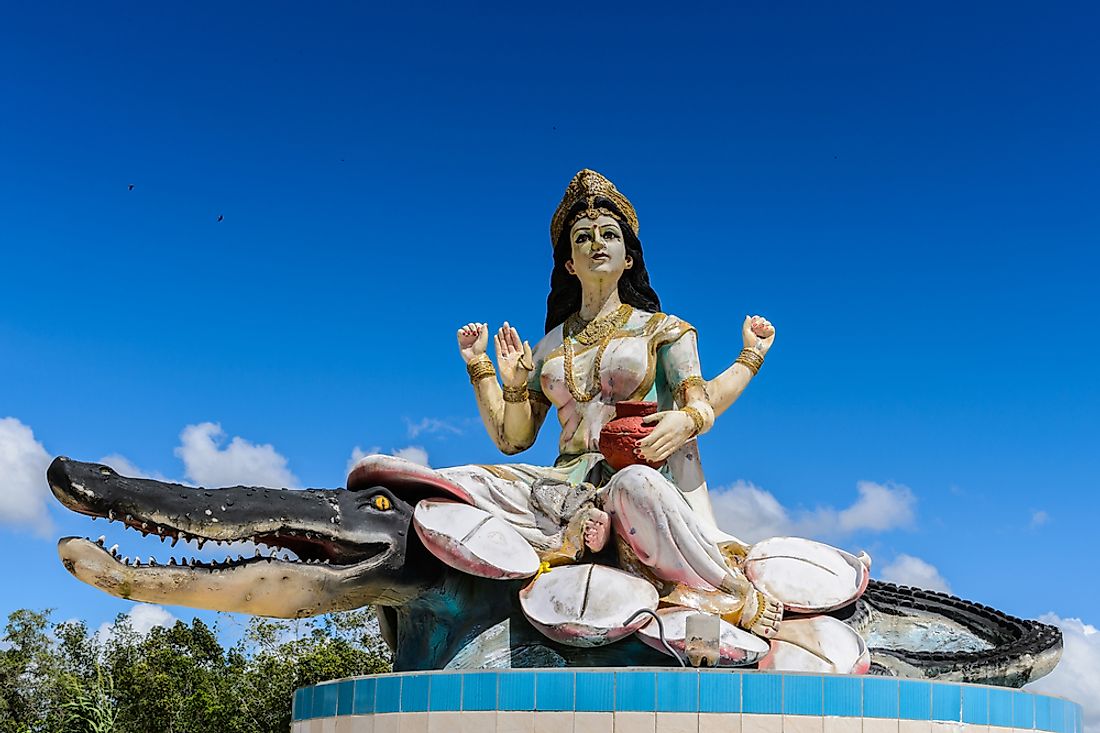So, have you ever wondered what makes the art scene in Suriname so unique? Well, let me tell you, it’s all about the fusion of cultures! Suriname, located on the northeastern coast of South America, is a melting pot of different ethnicities and traditions. And this diversity is beautifully reflected in its art.
In Suriname, you can find a wide range of artistic expressions, from traditional indigenous art to modern contemporary pieces. The country’s art scene is a vibrant mix of influences from the indigenous people, Dutch colonizers, African slaves, and various immigrant groups like the Javanese, Chinese, and Hindustani. This rich cultural heritage has given birth to a truly unique and diverse art scene.
If you’re curious to learn more about the Surinamese art scene and the fascinating fusion of cultures that shape it, stay tuned! In our upcoming article, we’ll delve deeper into the different art forms, artists, and galleries that make Suriname’s art scene so special. Whether you’re an art enthusiast or simply interested in exploring different cultures, this is an article you won’t want to miss! So, grab a cup of tea, sit back, and let’s embark on a journey into the Surinamese art world together.
History of Surinamese Art
The Influence of Indigenous Art
Suriname, a small country located on the northeastern coast of South America, is a melting pot of cultures and traditions. Its rich artistic heritage reflects the diverse influences that have shaped the Surinamese art scene over the years. The history of Surinamese art can be traced back to the indigenous tribes that have inhabited the region for centuries.
Indigenous art in Suriname is characterized by its connection to nature and spiritual beliefs. The indigenous people of Suriname, including the Arawak, Carib, and Warao communities, have a deep respect for their natural surroundings and this reverence is reflected in their art. Traditional motifs such as animals, plants, and geometric patterns are often depicted in various art forms.
Introduction of European Styles
The arrival of European colonizers in the 16th century brought about a significant shift in the Surinamese art scene. European artistic styles, particularly Dutch and French influences, began to permeate the local art scene. European artists introduced techniques such as perspective, oil painting, and portraiture to Suriname.
During the colonial period, European artists often depicted landscapes, everyday life, and portraits of the colonial elite. These paintings were primarily created for the European market and were influenced by the prevailing artistic trends in Europe. However, indigenous themes and motifs continued to be incorporated into the art, resulting in a unique fusion of European and indigenous styles.
Impact of African and Asian Influences
The African and Asian influences on Surinamese art can be attributed to the country’s history of slavery and indentured labor. The African diaspora brought with it a rich cultural heritage, including vibrant music, dance, and art forms. African artistic techniques, such as pottery and sculpture, became intertwined with the existing indigenous and European styles.
Similarly, the arrival of Asian indentured laborers, particularly from India and China, introduced new artistic traditions to Suriname. Indian influences can be seen in the intricate textile prints of Surinamese traditional dress, known as Pangi. Chinese art forms, such as calligraphy and brush painting, have also found their place in the Surinamese art scene.
Key Artists in Surinamese Art
Johan Ferrier: Pioneering Surinamese Painter
Johan Ferrier is considered one of Suriname’s most important painters and a pioneer of modern Surinamese art. Born in 1910, Ferrier began his artistic career in the 1930s and went on to become the country’s first President after Suriname gained independence from the Netherlands in 1975.
Ferrier’s paintings often depict scenes from everyday life in Suriname, including landscapes, street scenes, and portraits of ordinary people. His use of bright colors and bold brushstrokes reflects the influence of European expressionism and Fauvism. Ferrier’s work has become iconic in Surinamese art and continues to inspire younger generations of artists.
Erwin de Vries: Sculptor Extraordinaire
Erwin de Vries is a renowned Surinamese sculptor known for his innovative use of materials and his ability to capture the human form with great precision. Born in 1929, de Vries studied in the Netherlands before returning to Suriname in the 1960s. His sculptures reflect a deep connection to his Surinamese roots and often explore themes of cultural identity and history.
De Vries’ sculptures portray the diversity of Suriname’s population, combining African, Indian, and indigenous influences. His use of materials such as wood, bronze, and stone adds a tactile quality to his work, inviting viewers to engage with the sculptures on a physical level. De Vries’ contribution to the Surinamese art scene has earned him international recognition and his sculptures can be found in public spaces and art collections around the world.
Remy Jungerman: Contemporary Mixed Media Artist
Remy Jungerman is a contemporary Surinamese artist known for his exploration of cultural hybridity and his use of mixed media. Born in 1959, Jungerman grew up in Suriname and later moved to the Netherlands, where he currently resides. His work is deeply influenced by his Surinamese heritage and combines elements of African, indigenous, and European art.
Jungerman’s art often incorporates traditional Surinamese symbols and motifs, such as winti designs and pangi prints, into contemporary mixed media pieces. His use of materials such as wood, fabric, and found objects adds texture and depth to his work. Jungerman’s art challenges traditional notions of identity and cultural boundaries, creating a space for dialogue and exploration within the Surinamese art scene.
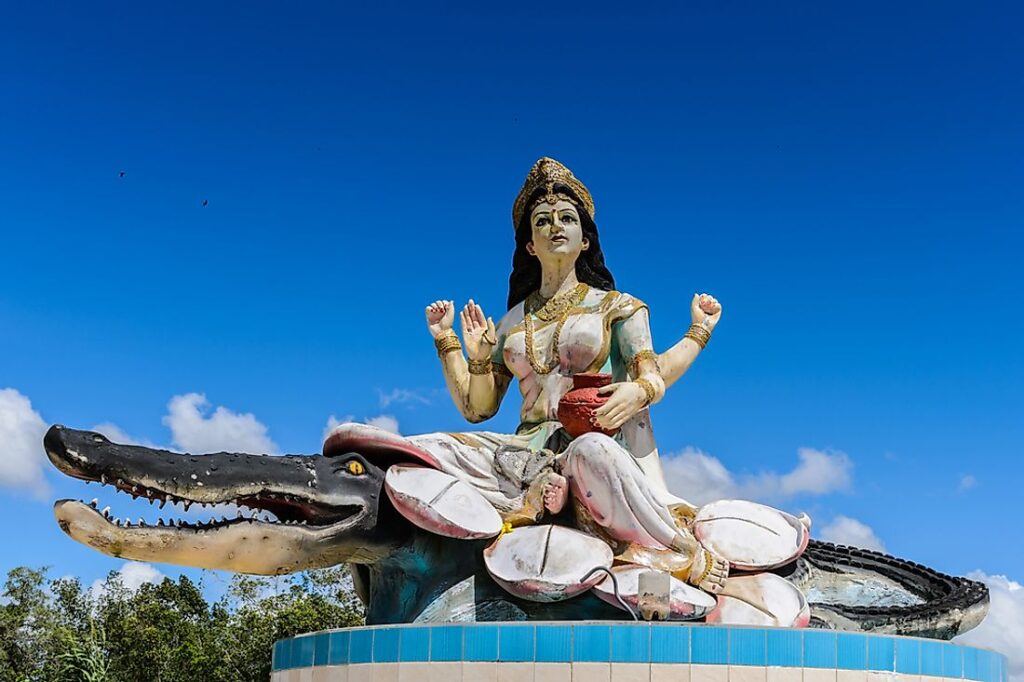
Traditional Surinamese Art Forms
Winti: Spiritual Art and Rituals
Winti is a traditional Surinamese religious practice that originated with the African diaspora. It combines elements of African spirituality, Christianity, and indigenous beliefs and is characterized by its vibrant artistic expressions. Winti art commonly includes religious objects, such as sculptures and masks, which are used in ceremonies and rituals.
These objects often depict deities and spirits associated with Winti, incorporating symbols and colors that hold specific meaning within the religious practice. Winti art is not only a form of visual expression but also serves as a means of communication with the spiritual realm. It continues to play a significant role in Surinamese culture and is recognized for its contribution to the artistic heritage of the country.
Petjei: Traditional Mask Making
Petjei is a traditional mask-making art form in Suriname that is rooted in African and indigenous traditions. Masks are created for various purposes, including religious ceremonies, performances, and entertainment. Petjei masks are often made from natural materials such as wood, leaves, and feathers, and are meticulously crafted to represent specific characters or spirits.
Each Petjei mask is imbued with spiritual significance and is believed to possess its own unique energy. The mask-makers, known as Pekoti, have a deep understanding of the cultural and spiritual symbolism associated with each mask. Petjei masks are not only visually striking but also serve as a means of cultural preservation, ensuring that the traditions and beliefs of Suriname’s ancestors are kept alive.
Pangi: Vibrant Textile Prints
Pangi is a traditional textile art form in Suriname that is worn as a wraparound skirt by both men and women. The vibrant, geometric patterns on the fabric hold cultural and symbolic significance, representing various aspects of Surinamese life and heritage. Pangi prints are created using a resist dyeing technique, where sections of the fabric are covered with wax or other substances to create patterns, and then dyed with different colors.
Each Pangi design tells a story, reflecting the history and traditions of the Surinamese people. The art of Pangi making is passed down from generation to generation, with each family adding their unique patterns and styles to the fabric. Pangi is not only a form of clothing but also a visual representation of Surinamese identity and cultural pride.
Modern Art Movements in Suriname
Abstract Expressionism and Surrealism
In the mid-20th century, Surinamese artists began to experiment with new artistic styles and movements, reflecting the changing social and political climate of the time. Abstract expressionism and surrealism were among the influential art movements that emerged in Suriname during this period.
Artists such as Rudi Getrouw and Armand Baag are known for their abstract expressionist paintings that explore the use of color, texture, and gesture to convey emotions and ideas. Surrealist artists, such as Soeki Irodikromo, drew inspiration from dreams and the subconscious to create fantastical and symbolic artworks. These modern art movements introduced a new level of experimentation and abstraction to the Surinamese art scene.
Surinamese Sculptural Renaissance
In recent decades, there has been a resurgence of sculptural art in Suriname, with artists pushing the boundaries of traditional sculpture and exploring new materials and techniques. The Surinamese sculptural renaissance has been marked by the works of artists like George Struikelblok and Philip Agard.
Struikelblok’s sculptures often depict the human figure in abstract and unconventional ways, challenging traditional notions of beauty and form. Agard, on the other hand, incorporates elements of nature and spirituality into his sculptures, creating powerful and evocative artworks. Through their innovative approaches to sculpture, these artists have revitalized the medium and brought new energy to the Surinamese art scene.
Urban and Street Art
Urban and street art have also found a place in the Surinamese art scene, particularly in the capital city of Paramaribo. Graffiti artists, such as Kurt Nahar and Shaq Buku, have transformed public spaces into vibrant and thought-provoking art galleries. Their murals and street art reflect social and political issues, as well as aspects of Surinamese culture and history.
Urban and street art have provided a platform for Surinamese artists to engage with a wider audience and challenge conventional notions of art. These artists utilize the streets as their canvas, blurring the boundaries between art and the urban environment.
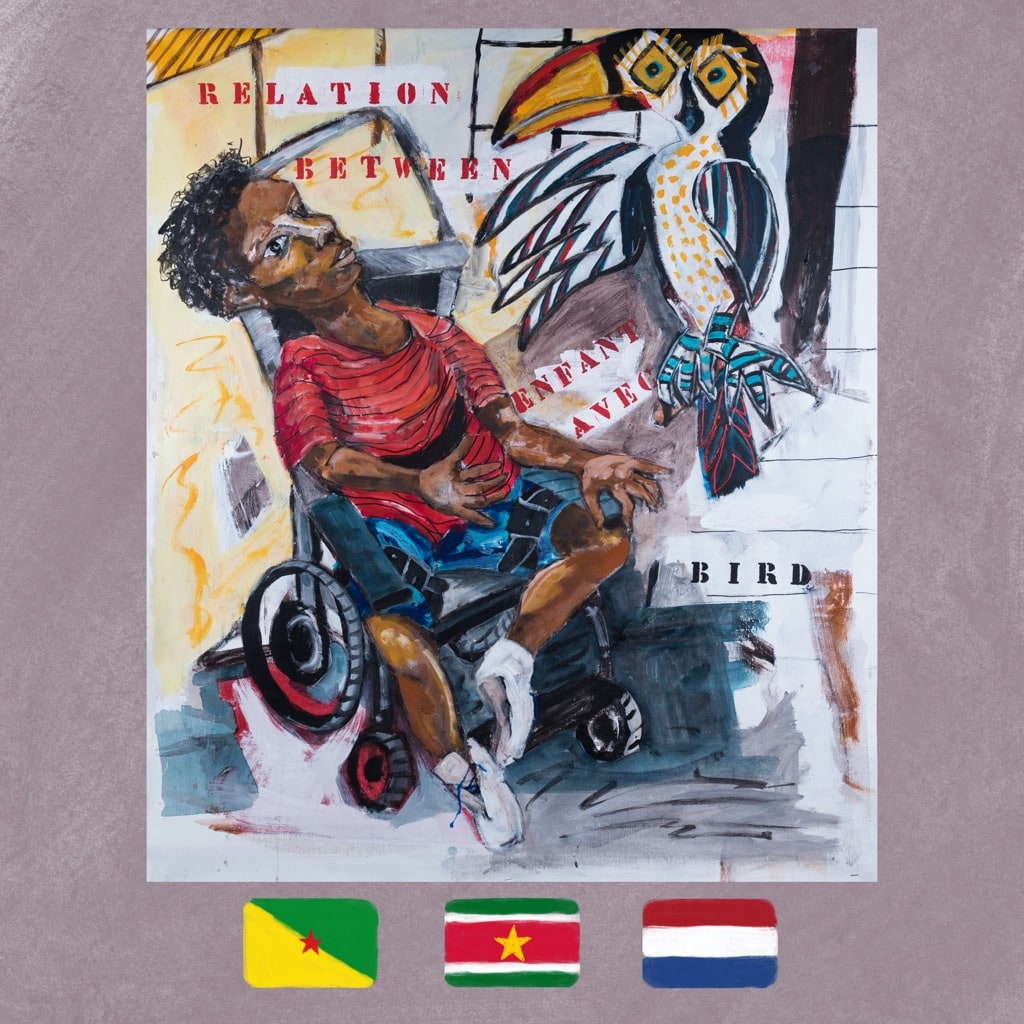
Art Galleries and Museums in Suriname
Surinaams Museum: Showcasing National Heritage
The Surinaams Museum, located in the heart of Paramaribo, is the largest museum in Suriname dedicated to preserving and showcasing the country’s cultural heritage. The museum houses a diverse collection of artifacts, artworks, and historical objects that span Suriname’s rich history.
Visitors to the Surinaams Museum can explore exhibitions that cover a wide range of topics, from indigenous cultures and colonial history to contemporary art. The museum’s collection includes indigenous art and crafts, colonial-era paintings, and contemporary works by Surinamese artists. Through its exhibitions and educational programs, the Surinaams Museum plays a crucial role in promoting Surinamese art and culture to both local and international audiences.
Nola Hatterman Art Academy: Promoting Young Talent
The Nola Hatterman Art Academy, named after the renowned Dutch-Surinamese artist, is a leading institution for art education in Suriname. The academy provides comprehensive training in various art disciplines, including painting, sculpture, ceramics, and graphic design.
The Nola Hatterman Art Academy is known for its commitment to nurturing young talent and providing opportunities for aspiring artists to develop their skills and explore their artistic potential. The academy’s curriculum emphasizes a combination of theoretical knowledge and practical experience, allowing students to gain a solid foundation in art while encouraging experimentation and personal expression.
Fort Zeelandia: Historical Setting for Contemporary Art
Fort Zeelandia, a historic fortress located on the Suriname River in Paramaribo, has been transformed into a cultural center that showcases contemporary art. The fort’s galleries feature rotating exhibitions by local and international artists, covering a wide range of artistic disciplines.
The unique setting of Fort Zeelandia adds an extra dimension to the exhibitions, creating a compelling juxtaposition between the historical architecture and the contemporary artworks. The cultural center also hosts artist residencies, workshops, and events that foster collaboration and dialogue within the Surinamese art community.
Contribution of Surinamese Art to Global Art Scene
Exploring Cultural Identity and Migration
Surinamese artists have made significant contributions to the global art scene by exploring themes of cultural identity and migration. The Surinamese diaspora, spread across countries such as the Netherlands, the United States, and French Guiana, has provided artists with a unique perspective on issues of belonging, displacement, and cultural hybridity.
Artists like Iris Kensmil and Charl Landvreugd have used their work to explore the complexities of Surinamese identity in a diasporic context. Through their paintings, installations, and multimedia artworks, they challenge traditional notions of identity and nationality, highlighting the fluid and ever-evolving nature of cultural identity.
Challenging Colonial Narratives
Surinamese artists have also played a crucial role in challenging colonial narratives and redefining the historical discourse. Through their artworks, they provide alternative perspectives and narratives that center the experiences and voices of marginalized communities.
For example, Marcel Pinas, a prominent Surinamese artist from the Marowijne District, explores the history and contemporary issues facing the Maroon community, descendants of Africans who escaped slavery and formed independent societies in Suriname’s interior. Pinas’ installations and sculptures combine traditional Maroon symbols and materials with contemporary art techniques, offering a powerful critique of colonialism and its legacies.
Building Bridges Between Art Communities
Surinamese artists have actively engaged with international art communities, building bridges and creating networks that transcend geographical boundaries. Through exhibitions, residencies, and collaborations, Surinamese artists have connected with artists from around the world, fostering dialogue and cultural exchange.
The annual Trans-cultural Collaborations project, initiated by Surinamese artist Kurt Nahar, brings together artists from the Caribbean and beyond to explore themes of migration, identity, and globalization. By facilitating cross-cultural collaborations, this project has not only enriched the Surinamese art scene but also contributed to a wider global dialogue on contemporary art and cultural exchange.
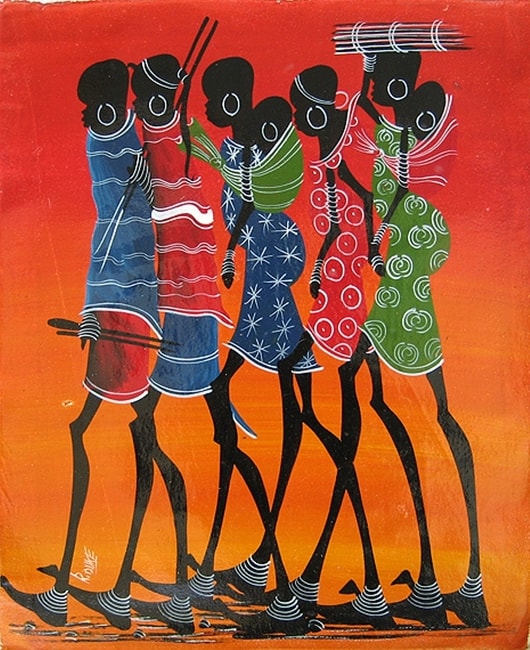
Art Education and Support Systems in Suriname
Art Schools and Workshops
Suriname has a strong tradition of art education, with several art schools and workshops dedicated to nurturing artistic talent. In addition to the Nola Hatterman Art Academy, there are other institutions, such as the Volksmuziekschool and the Suriname Art Academy, that provide training in various art forms.
These schools offer a range of programs and courses that cater to students of all ages and skill levels. They provide a supportive and creative environment where aspiring artists can develop their technical skills, explore different artistic mediums, and engage with the broader art community.
Government Initiatives and Grants
The Surinamese government recognizes the importance of supporting the arts and has implemented various initiatives and grant programs to promote artistic development. The Ministry of Education, Science and Culture has established funding opportunities for artists and cultural organizations, providing financial support for projects, exhibitions, and research.
These initiatives aim to encourage artistic innovation, preserve Surinamese heritage, and foster cultural exchange. They play a crucial role in providing artists with the resources and opportunities they need to pursue their artistic endeavors and contribute to the Surinamese art scene.
Private Foundations and Patronage
Private foundations and individual patrons have also played a significant role in supporting the Surinamese art scene. Organizations such as the Readytex Art Gallery and the Henck Arron Foundation have provided platforms for artists to showcase their work and connect with a wider audience.
Private collectors and art enthusiasts in Suriname have also been instrumental in supporting local artists through their purchases and patronage. Their contributions help sustain the artistic community and create opportunities for artists to thrive.
Emerging Trends in Surinamese Art
Digital Art and New Media
With the advancement of technology, artists in Suriname are embracing new media and digital art as a means of creative expression. Digital art allows artists to experiment with different mediums, techniques, and themes, pushing the boundaries of traditional art forms.
Artists like Roddney Tjon Poen Gie and Sri Irodikromo have embraced digital art, incorporating elements of photography, video, and animation into their works. Through their digital art, they explore themes such as identity, technology, and globalization, offering a fresh perspective on the contemporary Surinamese art scene.
Artivism: Art as Activism
Artivism, the combination of art and activism, has gained momentum in Suriname in recent years. Artists are using their work to address social and political issues, raise awareness, and advocate for change.
Artists like Kurt Nahar and Soeki Irodikromo have used their art to shed light on issues such as environmental degradation, social inequality, and human rights. Through their powerful and thought-provoking artworks, they inspire conversations and challenge the status quo, highlighting the role of art as a catalyst for social change.
Transcultural Collaborations
Collaborations between Surinamese artists and artists from different cultures and backgrounds have become increasingly prevalent in the Surinamese art scene. These collaborations foster cultural exchange, knowledge sharing, and the exploration of new ideas and perspectives.
Artists like René Tosari and Marcel Pinas have collaborated with international artists on projects that celebrate cultural diversity and challenge traditional boundaries. The resulting artworks often combine different artistic styles, techniques, and narratives, creating a fusion of cultures that reflects the interconnected world we live in.
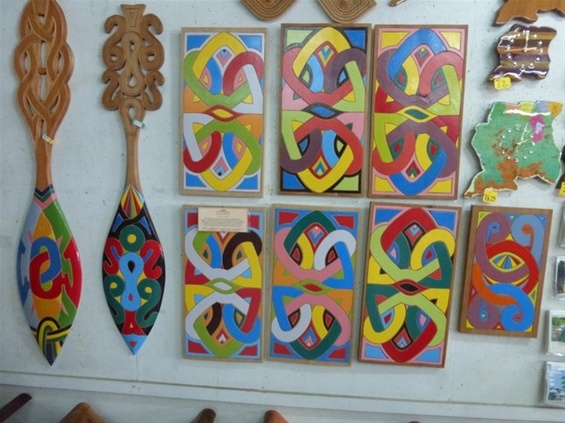
Surinamese Art Festivals and Platforms
Moengo Triennial: Celebrating Contemporary Art
The Moengo Triennial is a contemporary art festival that takes place in Moengo, a town in eastern Suriname known for its rich artistic heritage. The festival brings together local and international artists, curators, and art enthusiasts to celebrate and showcase contemporary art in the Surinamese context.
The Moengo Triennial features exhibitions, performances, workshops, and artist residencies that explore various artistic disciplines, including painting, sculpture, performance art, and installation. The festival provides a unique platform for artists to experiment, collaborate, and engage with the local community.
Paramaribo SPAN: Interdisciplinary Art Festival
Paramaribo SPAN is an interdisciplinary art festival that takes place in Paramaribo, the capital city of Suriname. The festival aims to bring together artists from different disciplines, such as visual art, music, dance, and theater, to explore the intersection of art forms and promote artistic innovation.
Paramaribo SPAN features a diverse program of exhibitions, performances, workshops, and panel discussions that encourage dialogue and collaboration between artists and audiences. The festival’s inclusive approach creates a dynamic and vibrant atmosphere, attracting both local and international participants.
Waka Toko: Street Art Showcase
Waka Toko is a street art showcase that takes place in various locations throughout Suriname. The event brings together local and international street artists to transform the urban landscape into a vibrant outdoor gallery.
During Waka Toko, artists create large-scale murals, graffiti, and street installations that reflect Surinamese culture, history, and social issues. The showcase not only adds color and creativity to the streets of Suriname but also invites the public to engage with art in unexpected and interactive ways.
Preservation of Surinamese Art Heritage
Archiving and Conservation Practices
Preserving Surinamese art heritage requires dedicated efforts to document, archive, and conserve artworks and artifacts. Institutions such as the Surinaams Museum and the National Archives of Suriname play a crucial role in preserving and maintaining Suriname’s artistic heritage.
Through careful documentation and storage practices, these institutions ensure that artworks and artifacts are protected from damage and decay. They also maintain extensive archives and databases that provide researchers, historians, and art enthusiasts with access to Suriname’s rich cultural history.
Role of Cultural Institutions
Cultural institutions, such as museums, galleries, and cultural centers, are instrumental in preserving and promoting Surinamese art heritage. These institutions serve as custodians of the country’s cultural treasures and provide spaces for artists to showcase their work and engage with audiences.
By organizing exhibitions, educational programs, and cultural events, cultural institutions actively contribute to the preservation and dissemination of Suriname’s art heritage. They provide platforms for dialogue, creativity, and cultural exchange, ensuring that Surinamese art continues to thrive and evolve.
Community Engagement for Preservation
Preserving Surinamese art heritage is a collective effort that requires the active participation of communities and individuals. Community engagement initiatives play a crucial role in raising awareness about the importance of art preservation and fostering a sense of ownership and pride within the community.
Community-led projects, such as mural restorations, art workshops, and cultural festivals, provide opportunities for individuals to connect with their cultural heritage and contribute to its preservation. These initiatives not only promote artistic expression but also strengthen community bonds and create a sense of belonging.
International Recognition of Surinamese Artists
Representation at Biennales and Art Fairs
Surinamese artists have gained international recognition through their participation in biennales and art fairs around the world. These platforms provide opportunities for artists to showcase their work to a global audience and engage with the international art community.
Surinamese artists, such as Isan Corinde, Remy Jungerman, and Patricia Kaersenhout, have exhibited their work at prestigious events like the Venice Biennale, the Havana Biennial, and Art Rotterdam. Their participation in these international events has not only raised the profile of Surinamese art but has also contributed to a wider understanding and appreciation of the country’s cultural heritage.
Recognition by International Art Critics
Surinamese artists have received acclaim and recognition from international art critics and scholars, further establishing the country’s presence on the global art stage. Critics have praised Surinamese artists for their innovative approaches, unique perspectives, and ability to blend cultural influences.
Artists like Marcel Pinas, whose work has been showcased at the Tropenmuseum in Amsterdam and the Smithsonian National Museum of African Art in Washington, D.C., have been celebrated for their contribution to contemporary art discourse. The recognition by international art critics serves as validation for Surinamese artists and their artistic achievements.
Surinamese Artists in Residency Programs
Residency programs provide artists with the opportunity to immerse themselves in new environments, cultures, and artistic communities. Surinamese artists have been selected for prestigious international residency programs, allowing them to showcase their work, engage with other artists, and gain exposure on an international level.
Artists such as Marcel Pinas and George Struikelblok have participated in residencies in the Netherlands, France, and the United States, deepening their artistic practice and expanding their networks. These opportunities contribute to the growth and development of Surinamese artists and foster cross-cultural collaborations that enrich the Surinamese art scene.
Challenges and Opportunities in Surinamese Art Scene
Limited Infrastructure and Resources
One of the main challenges facing the Surinamese art scene is the limited infrastructure and resources available to artists and cultural institutions. The lack of purpose-built art studios, galleries, and museums makes it difficult for artists to showcase their work and for audiences to access art.
Limited funding and resources also pose challenges for cultural institutions, hindering their ability to preserve and promote Surinamese art heritage. Government support and private investment in the arts are essential to address these challenges and provide the necessary infrastructure and resources for the Surinamese art scene to flourish.
Balancing Traditional and Contemporary Art
The Surinamese art scene is characterized by a delicate balance between traditional and contemporary art forms. While traditional art forms play a significant role in preserving Surinamese cultural heritage, contemporary artists are pushing the boundaries of artistic expression and exploring new mediums and techniques.
Striking a balance between traditional and contemporary art can be a challenge, as it requires maintaining a connection with the past while embracing new ideas and aesthetics. However, this balance also presents opportunities for artists to create innovative and culturally relevant artworks.
Expanding Global Art Market Access
Access to the global art market is another area where Surinamese artists face challenges. Limited exposure and visibility restrict opportunities for artists to sell their work internationally and build sustainable careers.
Efforts to expand global art market access for Surinamese artists include participating in international art fairs, establishing online platforms, and collaborating with international galleries and collectors. These initiatives can help create new opportunities for Surinamese artists and position Surinamese art within the global art market.
Collaboration between Surinamese Artists and Diaspora
Cultural Exchange and Identity Reinforcement
Collaborations between Surinamese artists and the Surinamese diaspora have the potential to strengthen cultural exchange and reinforce Surinamese identity both locally and internationally. By working together, artists from Suriname and the diaspora can explore their shared cultural heritage and challenge narratives of fragmentation and disconnection.
These collaborations can be instrumental in shaping a collective sense of cultural identity and promoting the unique artistic expressions of Surinamese communities around the world. They also provide opportunities for diaspora artists to reconnect with their Surinamese roots and contribute to the artistic development of their home country.
Transnational Art Exhibitions
Transnational art exhibitions provide a platform for Surinamese artists to showcase their work to a global audience and foster cross-cultural understanding. These exhibitions often explore themes of migration, identity, and belonging, reflecting the experiences of Surinamese artists living in different parts of the world.
Collaborative exhibitions between Surinamese artists and artists from other countries create opportunities for cultural exchange and dialogue, promoting a deeper understanding of Surinamese art and culture. Through these exhibitions, Surinamese artists can connect with international art communities and position their work within a broader artistic context.
Virtual Art Spaces for Collaboration
Advancements in technology have opened up new possibilities for collaboration between Surinamese artists and the diaspora, even in the absence of physical proximity. Virtual art spaces, such as online galleries and digital platforms, provide opportunities for artists to connect and collaborate across geographical boundaries.
Through virtual art spaces, Surinamese artists and diaspora artists can share their work, exchange ideas, and engage in cross-cultural collaborations. These platforms allow for the creation of transnational artistic communities that transcend physical limitations and foster connections based on shared artistic interests and experiences.
Conclusion
The Surinamese art scene is a vibrant fusion of cultures, reflecting the country’s rich history and diverse heritage. From its indigenous roots to the influences of European, African, and Asian traditions, Surinamese art embraces a wide range of artistic styles and expressions.
Key artists like Johan Ferrier, Erwin de Vries, and Remy Jungerman have made significant contributions to the Surinamese art scene, both locally and internationally. Traditional art forms such as Winti, Petjei, and Pangi continue to play a crucial role in preserving Surinamese cultural heritage, while modern art movements, urban art, and digital art push the boundaries of artistic innovation.
Art education, government initiatives, and private support systems are essential in nurturing the Surinamese art scene and providing opportunities for artists to thrive. Emerging trends, such as digital art, artivism, and transcultural collaborations, offer new avenues for artistic expression and engagement with global audiences.
Despite facing challenges such as limited infrastructure and access to the global art market, the Surinamese art scene continues to grow and evolve. Collaboration between Surinamese artists and the diaspora, both through physical and virtual spaces, contributes to the preservation and promotion of Surinamese art heritage.
The Surinamese art scene is a testament to the power of art to bridge cultural divides, challenge established narratives, and inspire change. As Surinamese artists continue to forge new paths and build connections within and beyond their borders, they shape a dynamic and diverse artistic landscape that embraces the country’s unique multicultural identity.
